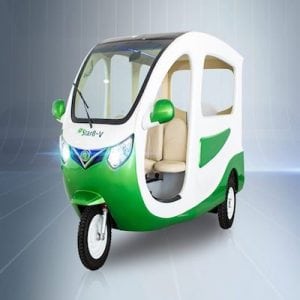
Agriculture
June 23, 2024
Star 8 Luxury Trike
Read SolutionImplemented by
Star 8 Green
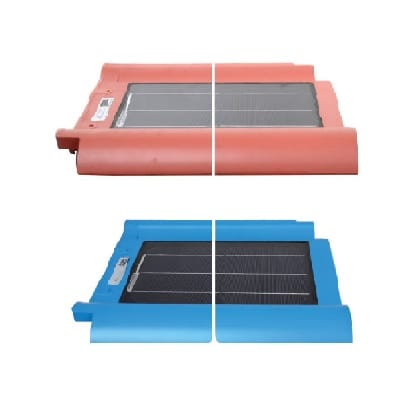
Updated on February 1, 2024
·Created on July 11, 2016
Strauss Stima Tile is a plastic roofing tile with an embedded solar panel that can power a home, and potentially sell power back to the grid.
The Stima Tile is a Building Integrated Photovoltaic (BIPV) product consisting of a plastic roofing tile with an embedded solar panel. A system of Stima Tiles can be interconnected to an inverter, and charge and system controllers linked to a battery storage system, to provide electricity and potentially sell power back to the national grid. Alternatively, the system can be integrated with a compressed-air energy storage technology that can be shared between 5 – 10 households and provides clean water as a byproduct. This product was designed by Strauss Energy and is currently in the market.
The price depends on the size of the tile (8W, 24W, 50W, 150W, and tile blanks) and ranges from 16- 240 USD. A traditional household roof could cost around 15,000-25,000 USD.
The roofing tile system can be paid immediately or through monthly installments. Users can also opt for the integration of an air compressor unit for energy storage, Strauss Energy offers a unit that can be shared between 5 – 10 households at a price of 40,000 USD.
Strauss Energy can subsidize the products for cases where a Feed-in-Tarif (FiT) applies and they can sell power back into the grid.
Target SDGs
SDG 7: Affordable and Clean Energy
SDG 11: Sustainable Cities and Communities
Market Suggested Retail Price
$240.00
Target Users (Target Impact Group)
Household, Community, Small and Medium-sized Enterprises
Distributors / Implementing Organizations
Systems are designed, delivered, and installed by Strauss Energy. Currently, Strauss Energy partners with local housing developers, building constructors, and warehouses to promote the product.
Countries
Kenya
Manufacturing/Building Method
Strauss Energy outsources the manufacturing of this product to Shenzhen Joolpower located in China, where it is mass-produced.
Intellectural Property Type
Select Type
User Provision Model
Strauss Energy partners with building constructors and housing developers to offer the product for renovations or new construction of households. Interested users from domestic households, commercial or industrial sectors can also register their home or building to further be evaluated for a building-integrated solar photovoltaic installment. Strauss technicians visit the requested site to assess the energy requirements, and then they measure them against other parameters (size of the roof, local climate conditions) to determine the appropriate size and capacity for an installation.
Distributions to Date Status
As of 2020, this product has been installed in 1,400 households. Strauss Energy expects to reach 35,000 households by 2021.
Power rating (W or kW)
8W, 24W, 50W, 150W
System dimensions (m)
Tile sizes: 0.443 m x 0.32 m (8W), 0.642 m x 0.32 m (24W), 50W – 1.055 m x 0.42 m (50W), 1.532 m x 0.70 m (150W). A traditional household in Kenya requires only a third of the roof to be installed with the solar tiles to meet its energy demands.
Battery type
A Strauss Stima Tiles system can either be integrated with a battery storage system or a compressed air hydraulic energy storage (CAES) system.
Battery capacity (mAh)
Depends on the size of the system
Description of solar panels
The solar crystalline silicon cells are embedded into tiles that are made of a ceramic and plastic mix.
Grid compatibility (yes/no)
Yes
Description of mobility
Stationary
Design Specifications
The Stima Tile is a BIPV product composed mainly of a roofing tile and an embedded photovoltaic panel. The tile element is made from a mix of ceramic and plastic and the solar cells are embedded on tempered glass. This product comes in various shapes, sizes and colors to fit households, office premises, warehouses, carports stadiums, and markets. The tiles can either be added onto a new structure or else placed on an existing roof if it is a sufficiently straight and even surface. If a new structure is used, the tiles must be installed onto appropriately spaced and sized battens. Because of the difference in the dimensions between the Stima Tile and conventional roofing tiles, structural battens need to be spaced accordingly with the respective Stima Tile in use.
A system solar photovoltaic circuit is completed with an array of 12 interconnected units of Stima Tiles that are connected to inverters, charge, and system controllers that are also connected to batteries or a compressed air hydraulic energy storage. Users can opt to add a smart-grid system to monitor each tile's performance. The manufacturer estimates that approximately 1/3 of roof coverage is enough to power a whole house.
The units of this product come in four different sizes:
Technical Support
Provided by the manufacturer. Strauss Energy has solar certified technicians in-house.
Replacement Components
If a unit (tile) breaks a new unit can be ordered from the manufacturer to replace it. Other replacement components include batteries, inverters, and charge and system controllers.
Lifecycle
50-year warranty on roofing element and 25 years on electrical components.
Manufacturer Specified Performance Parameters
The designers aim to reduce installation costs of roofing tiles by 30% and electricity bills by 25%. Strauss Energy assures that its users can obtain a return on their investment in 84 months from energy savings and extra power generation and income from electricity sales. A household Strauss Tile system is designed so that users can produce more than twice their electricity consumption.
Vetted Performance Status
A case study carried out by Heinrich Böll Stiftung on the Gaitheri Secondary School Solar PV Roof, Strauss Energy first proof of concept project, showed that since the installation of solar power, the school enjoys uninterrupted power supply which enables the teachers to offer computer classes for extended hours unlike before when they had to rely on the intermittent grid power. Testing carried out by Strathmore Energy Research Center (SERC) on the performance characteristics of six 8W BIPV modules connected in a string determined a PV string power of 50.45 W and PV power per module of 8.41 W at Standard Test Conditions (STC). SERC concluded that the performance at STC yielded more power by 5.1% of the rated but with higher temperatures, the efficiency greatly reduces to less power generation. According to the manufacturer, Strauss Energy products comply with the Kenya Bureau of Standards.
Safety
Workers may be exposed to the regular dangers of a construction site that include working at heights and with sharp tools. Precaution must be taken regarding electrical contacts or wiring, the person handling them must use adequate safety gear.
If too much pressure is applied to the photovoltaic panel, the device might break and cause bodily injury or electrical shock.
Minor risk of burns exists due to the heating of the photovoltaic panel’s surface by the sun.
Complementary Technical Systems
As an alternative to battery storage systems, this product can be incorporated with a compressed air hydraulic energy storage (CAES) system, which at the same time provides clean water as a byproduct that can be used by households or other compounds.
Academic Research and References
Ciambotti, G., Sydow, A. and Sottini, A., 2019. The Strauss Energy Business Model: Affordable Technology Innovation to Empower Kenya and Light Up the World. London: SAGE Publications, Inc.
Karjalainen, J., Ruotsalainen, J., Heinonen, S., Byrne, R., 2018, Radical Solar Energy Startups in Kenya and Tanzania, Finland Futures Research Center, University of Turku, Finland.
2018, People and Power: Stories of Small Scale Renewable Energy Entrepreneurs in Kenya, Heinrich Boell Stiftung.
Tanui, C., 2018, Strauss Energy Limited Seeks Permit to Distribute Electricity, The Kenyan Wall Street
Heinrich-Böll-Stuiftung, 2018, “Case Study 10: Solar Roofing Tiles As A Sustainable Energy Source“, The People and Power: Stories of Decentralized Renewable Energy Entrepreneurs in Kenya, Heinrich-Böll-Stuiftung, p 56
Compliance with regulations
Strauss Energy claims the Stima Tile complies with the Kenya Bureau of Standards.
Strauss Energy has been certified as a B Corporation since 2018 and in 2019 was included in B Corps's Best For The World: Environment List.
In 2018, Strauss Energy Ltd. applied to the Energy Regulatory Commission (ERC) for a Electric Power Generation and Supply permit for its power plants.
Evaluation methods
Strathmore Energy Research Center performed the IEC 62257-9-5:2013 standard test method.
Other Information
Strauss Energy was included in the 2017 German Energy Agency's Top 100 Start-ups from a global initiative: "Start Up Energy Transition".
Strauss Energy won Best Growing Business Award from the Africa Awards for Entrepreneurship 2017.
Because of her work at Strauss Energy, Charity Wanjiku, Strauss Energy co-founder and COO, was included in former U.S President Barack Obama's Global Entrepreneurship Summit at Stanford University in 2016, as part of the Global Innovation through Science and Technology (GIST) Network.
Strauss Energy co-founder and CTO, Daisy Karimi Muthatmia, was a Mandela Washington Fellow in the Young African Leader Initiative, a program that helped develop the company's organizational development and business launch.
Video on Strauss Energy, Developers of Solar Tiles

Agriculture
June 23, 2024
Implemented by
Star 8 Green
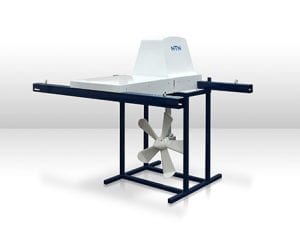
Agriculture
December 2, 2024
Implemented by
NTN Global

Agriculture
June 20, 2024
Implemented by
MuvMi
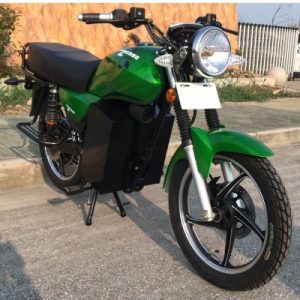
Agriculture
June 26, 2024
Implemented by
Zembo
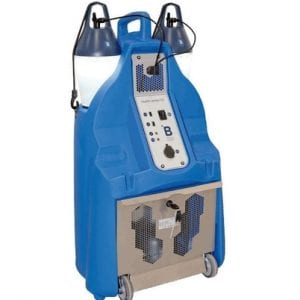
Agriculture
December 30, 2023
Implemented by
B Medical Systems
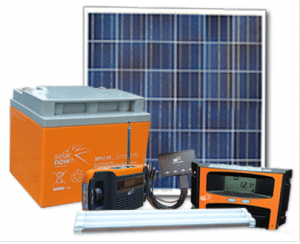
Agriculture
December 11, 2024
Implemented by
SolarNow
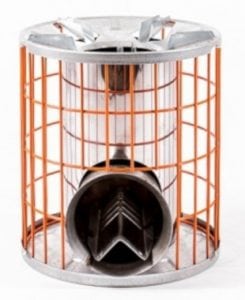
Agriculture
December 3, 2024
Implemented by
Rocket Works
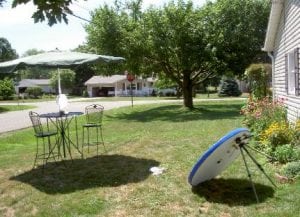
Agriculture
February 3, 2024
Implemented by
A Better Focus Company

Agriculture
December 7, 2024
Implemented by
Philips

Agriculture
June 9, 2024
Implemented by
Turkcell
Have thoughts on how we can improve?
Give Us Feedback